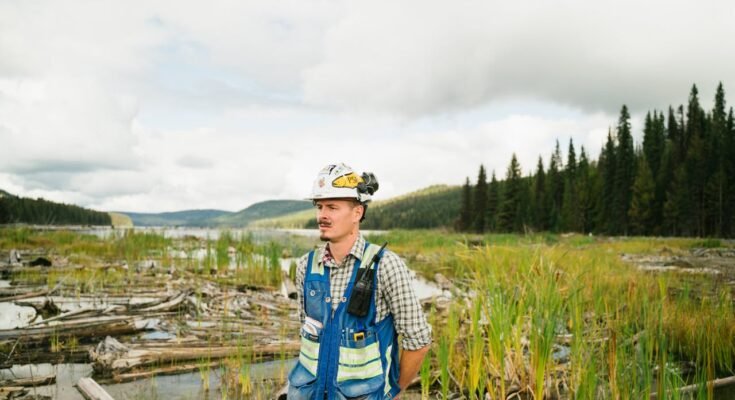Citizen science in the broadest sense refers to using general public volunteers, students, and communities for research data collection.
Only with more complex environmental challenges will citizen scientists’ input, a key building block towards resolving ecological crises, become indispensable.
This article explains what citizen science is, the benefits it offers, and how each of us can participate.
Citizen science assumes that trained scientists and non-professionals work together to collect information, observe natural events, and analyze results.
Technology, from smartphones to online platforms, has enabled citizen science to be more inclusive and diverse.
Examples include monitoring bird populations, tracking air quality using mobile apps, mapping biodiversity, etc.
Setbacks to environmental conservation stem from ineffectiveness to collect enough data for decision- and policy-making.
Databases contain endless amounts of both time-relevant and historical information to monitor temporal trends in changes of biodiversity and climate change.
1. Environmental advocacy
Information provided by local organizations frequently helps in adding important facets to legislation and decisions made by governments and other such bodies on the alteration of regulations or issues related to the environment and conservation strategies.
2. Public contributions to the sciences benefit everyone
a. Equal Opportunities for Scientific Exploration
Citizen science is the merging of diverse individuals to work together for shared concerns. This enhances their zest for contributing to solutions for issues conflicting with the environment.
b. Cost-Effective Alternatives
Citizen engagement in projects reduces the financial burden on conservation strategies and makes them efficient.
c. Connecting Science to Society
Citizen science informs the public on the subject so that they are informed of pressing environmental problems.
d.Connecting to the Community The notion of citizen science thus gives new meaning to the term collective impact through citizen collaboration on environmental platforms, raising awareness towards a shared responsibility for the environment.
3.Examples of Important Citizen Science Projects:
a.eBird This is one of the largest projects based on citizen science concerning biodiversity supervised by the Cornell Lab of Ornithology.
To date, participants have reported the species observed, creating an online global database on the population numbers of these species.
b.Globe at Night An initiative that aims to raise awareness about the issue of light pollution by encouraging individuals to subjectively assess the brilliance of the night sky in their locations.
The collected brightness information is compiled into an international database to allow researchers to analyze areas of research concern about patterns and impacts.
c.Plastic Waste Initiative Other combined organizations, including Ocean Conservancy, recruit volunteers to monitor and remove plastic waste from shorelines as a contribution toward global research on marine debris.
d.Project Feeder-watch Here, participants set bird feeders in their own yards and monitor the number of different species of birds visiting, including providing data to researchers for the study of bird population trends and distributions.
4. Obstacles and Solutions
However, some problems can be encountered when it comes to citizen science:
a. Accuracy of the Data
A carefully constructed citizen science program will provide participants with written instructions and support, assuaging the fear of data inaccuracy.
b. Keeping People Involved
Continuous involvement is a factor of challenge. A good strategy would involve instilling a sense of purpose and recognition into the participants which would help in propelling their ongoing enrollment.
c. Accessibility
Some members of the communities have no access to tools and resources that can support citizen science. This issue can be solved by improving internet access and providing alternative opportunities for participation.
5. Participation
Participating in citizen science is much easier than it seems to abide by. Follow these steps:
a. Find Out What Interests You
Choose a facet of environmental conservation that excites you most, whether wildlife, pollution, climate change, or something else.
b. Find a Project
Take advantage of various project databases, such as:
SciStarter- an anthology of citizen science projects.
Zooniverse- various projects by classifying galaxies up to wildlife monitoring.
c. Choose to Contribute Locally
Most projects aim at local areas in an effort to bring positive change to your community.
d. Spread the News About Your Findings
Use social networks and local groups to showcase your activities, encouraging others to participate.
Advances in technology make it possible for citizen science to play a greater role in conservation efforts.
Artificial intelligence, machine learning, and advanced methods of data visualization would further enable the researchers to deal with the huge amounts of data collected from the public.
These improvements will strengthen the data collected for conservation actions as they are now more precise and relevant.
Increased climate change will heighten the requirement for specific monitoring and compel more vigorous collection of geographic data.
Thus, citizen science will increasingly come to play a role in ecosystem rehabilitation and in the proactive responses that communities initiate to the challenges of the environment.
Conclusion
New technologies help citizen science to further engage in conservation efforts.
Researchers can use AI, machine learning, and advanced data visualization to deal with much larger sets of data that have been crowdsourced.
These upgrades promise to improve the quality and usefulness of data collected for conservation reasons.
The increasing urgency imposed by global warming will mean a greater need for monitoring and collecting spatial data.
This will further elevate citizen science’s role in ecosystem restoration and proactive responses to environmental challenges within communities.



